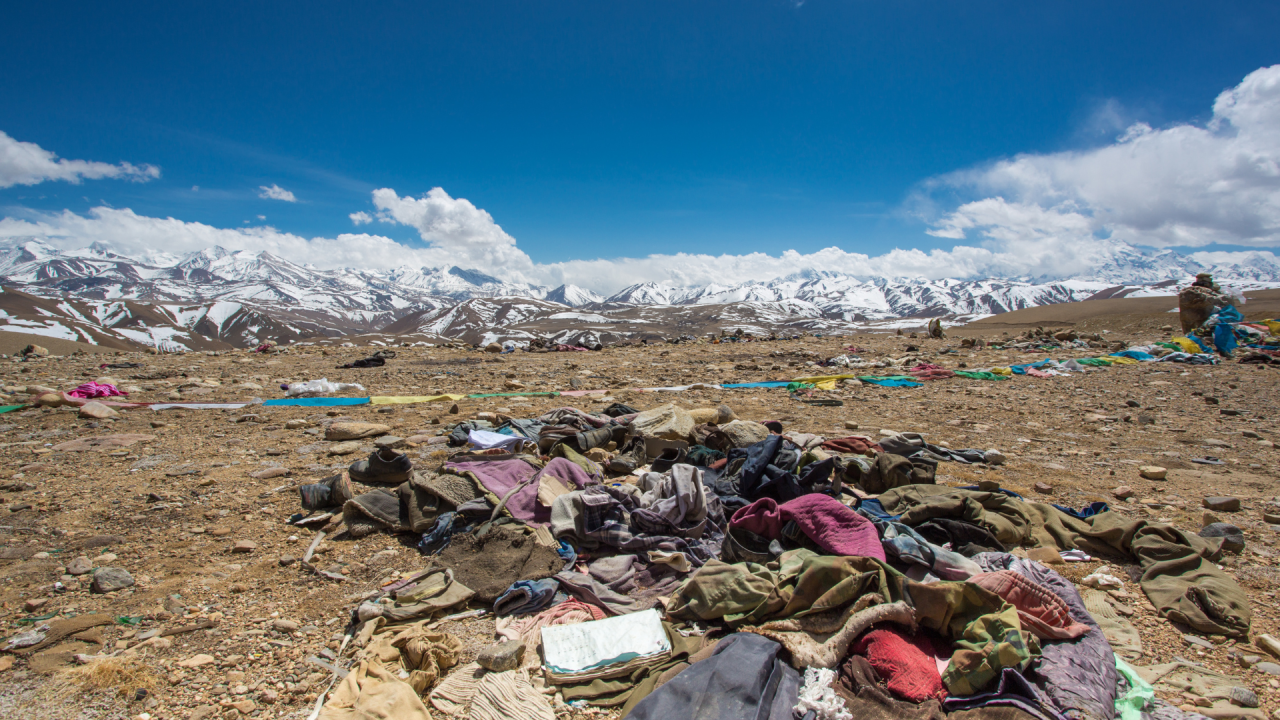
Fashion is moving too fast for the climate to handle
Welcome to NUS Business School's The Business Beat newsletter, where we explore alumni and student stories, and thought leadership articles from our faculty.
If this is your first time here, click here to learn more about us!
Fast fashion allows new collections to be constantly released because it can be made cheaply, quickly and in bulk. Meanwhile, consumers chasing the latest fashion trends are fuelling the demand, creating a vicious cycle.
As a consequence, there is a continuous accumulation of clothes in any typical closet, that most often than not, gets discarded readily when they become out of style. Bloomberg estimates that in the U.S. alone, up to 11.3 million tons of textile waste are thrown away yearly. This means around 2,150 pieces of clothing are disposed of each second.
These discarded clothing items usually end up in landfills. But, the synthetic fibres in these garments do not decompose quickly, in fact, it takes over 500 years, and can seep into the earth. When incinerated, they release harmful substances such as dioxins and acidic gases into the air.
There is the option of donating unwanted clothing to charity instead of disposal. These items often end up with vendors that will resell them in regions like Africa, South America and South Asia. Unfortunately, the leftover pieces still make their way back in landfills in these countries, polluting the Chile’s desert and Ghana’s rivers, to name a few.
A second life
But changes are afoot, with the European Union (EU) calling for garments produced to be more durable so that they can be reused and recycled. This will help to mitigate the volume of clothing ending up in landfills, and reduce impact on the environment.
Increasingly, more fashion companies have also started to jump on the sustainability bandwagon, and championed the concept of circular fashion. Cassia Cameron, a UCLA-NUS Executive MBA (EMBA) student and a material developer at Patagonia, which is committed to environmental and social responsibility, shares that circularity involves creating apparel that consumers can wear, return, and repurpose. “It's not just about creating sustainable products, it's about ensuring they have a second life,” she said.
“I researched and developed various types of recyclables and how they could be made into woven materials. My most recent work has been in secondary waste streams - looking to create materials out of ocean-bound plastic waste,” Cassia explained.
Individuals can play a role in sustainable fashion
While the fast fashion model of high volume and quick turnover may be replaced by one with more resilient and sustainable clothing, we, as consumers, can also play a part in contributing to a more sustainable fashion industry, hence protecting the environment.
Cassia, who prefers repairing apparel over buying new items, offers a few tips for consumers:
🔍 Check with brands to see if they offer any take-back programmes. Many brands are now collecting or taking back their products for recycling.
♻️ Check the label when you make a purchase. If the product has mixed materials (i.e. 50% polyester / 50% nylon or 80% cotton / 20% nylon), it is more difficult to recycle as the materials must be separated before recycling. It is easier to recycle mono-material products.
❤️ Look to brands that offer programmes where you can send in or purchase pre-loved items.
💪🏻 Buy products built for durability, performance, and functionality with heavy use that will last a while!
🚫 Look for products free of fluorinated or forever chemicals - materials with fluorinated chemicals have extreme durability that can get into water streams when washing, permanently impacting the environment and ecosystems around us!
Finally, what about buying less clothing items? Let’s ask ourselves; do we need that many items in our wardrobe? As the saying goes, less is more. 🙌🏼
More from BIZBeat
🙅 Wei Jee Ong, Joe Escobedo and Tiffany Tan say AirAsia boss Tony Fernandes’ recent topless massage episode is a stark reminder that even in the chase for comfort and flexibility, we should build a respectful culture for everyone to work in. Read more.
🌳 Green spaces may just be the answer to mental distress. Kwan Ok Lee says her research highlights preserving and creating more green spaces in city planning. Read more.
♿️ From riding a wheelchair to mimicking a lisp, our new faculty Emily M. David wants her students to acquire user empathy and think deeper about diversity and inclusion. Read more.
We celebrate our latest ranking achievements! 🎉


Events
🙌🏼 Find out more about our events and programmes here. Don't miss out!
Subscribe to the NUS Business School's #LinkedInNewsletter for monthly practical business insights.


𝐈𝐈𝐁𝐀®𝐄𝐂𝐁𝐀 Certified | 𝐈𝐈𝐁𝐀® MEMBER | Business Analyst
5moEye-opening insights on the impact of fast fashion and actionable tips for a sustainable wardrobe! 🌱♻️ - Being mindful of materials and opting for mono-material products makes recycling easier. - Supporting brands with pre-loved item programs encourages sustainability. - Investing in durable, functional clothing and avoiding harmful chemicals benefits both you and the environment. And yes, considering if we truly need more before buying aligns perfectly with 'less is more'—great tips for a greener wardrobe! 🌿 #nus #singapore #wardrobedesign
Upcycling Fashion Waste | Textile Waste Management
5moAbsolutely true! Fashion waste is an ever-growing concern, standing alongside other pressing waste issues. At Scrapplique Galore , I focus on upcycling textile waste right here in Singapore, aiming to alleviate the burden on landfills caused by fashion waste. Raising awareness about this issue is crucial.